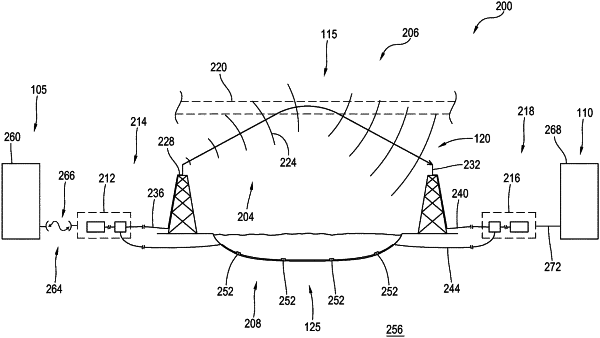| CPC H04L 27/01 (2013.01) [G06Q 40/04 (2013.01); H04L 1/0003 (2013.01); H04W 88/14 (2013.01)] | 23 Claims |

|
1. A method, comprising:
receiving a signal over a primary communication channel, wherein the primary communication channel includes a high frequency radio channel;
receiving at least a representative copy of the signal over a backend communication channel, wherein the backend communication channel has a greater latency and bandwidth than the primary communication channel;
determining a timing performance for the primary communication channel, wherein the timing performance includes a minimum time delay;
determining the minimum time delay at least based on financial trading timing data for a financial market;
determining a maximum delay time advantage limit, wherein the maximum delay time advantage limit is where being faster minimally impacts a rate of return in the financial market;
equalizing the primary communication channel with a first equalizer by comparing the signal with the representative copy, wherein the equalizing includes selecting a modulating and coding (MODCOD) scheme where an equalizer processing time for the equalizer is within the minimum time delay and the maximum delay time advantage limit;
establishing a best case performance of the first equalizer by delaying the signal by a delay during the equalizing;
converging a second equalizer with the first equalizer, wherein the converging occurs in response to the second equalizer at least satisfying the timing performance;
converging tap values of the first equalizer and the second equalizer;
combining the tap values of the first equalizer and the second equalizer to create a metric, wherein the metric includes an estimated inter-symbol interference (ISI) and signal to noise ratio (SNR);
selecting a modulation and coding method based on the metric; and
wherein the modulating and coding scheme is selected based on the estimated ISI and SNR.
|